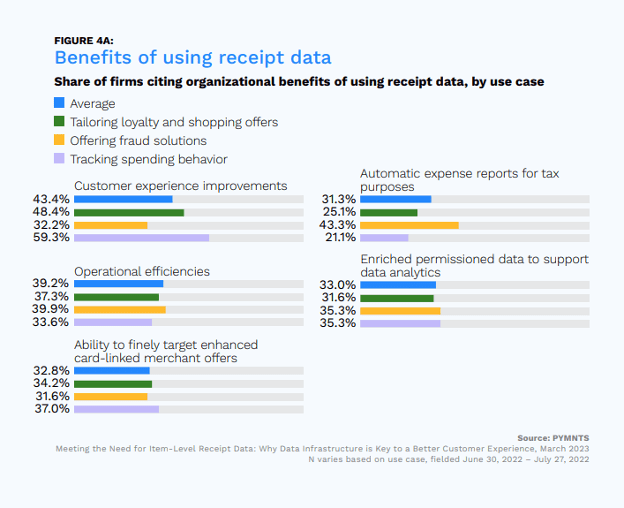
Say the word “receipt” and the image that springs to mind may be that crumpled piece of paper at the bottom of the desk drawer, a forgotten transaction recorded for posterity and tucked away in a coat pocket.
But in 2023, the humble receipt need not be so humble, and need not be an afterthought for consumers, and certainly should not be treated as such by merchants: The line items contained in the receipt, at a granular level, can be harnessed in a variety of ways that have beneficial impact to all stakeholders.
As reported across a survey of more than 350 financial institution (FI) and FinTech executives, and as collected in the report “Meeting the Need for Item-Level Receipt Data: Next Steps in Receipt Data Adoption,” a collaboration between PYMNTS and Banyan, integrating that data boosts customer engagement. The FIs had at least $5 billion in assets and the FinTechs at least 1 million active monthly users.

And increasing customer engagement, of course, helps boost business with merchants and FIs as they harness data to create new digital experiences, and even help customers understand their spending a bit better. Not only do revenues get a tailwind, customers armed with better insight into what they are spending, where and when are less inclined to dispute charges if they find their receipts less than transparent.
The data show that when organizations invest in item-level receipt data, the most influential factors they consider are technical infrastructure and available technologies.
When they use item-level receipt data to track consumer spending, nearly 3 in 5 firms say they expect customer experience improvements. Nearly half of these firms say that consumers benefit from more detailed spending insights. Fully 32% report that consumers receive more relevant shopping deals when firms use receipt data to tailor loyalty and shopping offers.
The chart below lays out the benefits that have been identified by executives, where 59% say that tracking spending behavior is a boon. That insight leads to better crafting of relevant offers and promotions, and winds up giving consumers a sense of where they are spending their hard-earned dollars and how they might fine-tune that spending.